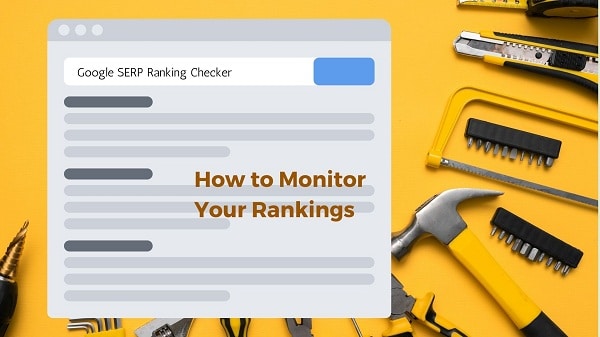I’m thrilled to share insights on SaaS SEO strategy with you. As a developer or technical expert, diving into the world of product marketing and sales can feel like a second education. You’re suddenly juggling new responsibilities, from understanding analytics to managing your website’s performance. While I won’t cover every aspect of SEO, this blueprint will provide a solid foundation for your SaaS marketing through SEO.
SaaS SEO Strategic Blueprint
In this post, I’ll detail how to organize an SEO website structure. I’ll take you through what kinds of content work best, and how to lay out your site. SEO has the potential to change the game, as my client—a software business I began partnering with in January 2022—showed. Data from this year compared to last on organic traffic is a graph that indicates a huge amount of organic traffic.
How to Do SEO for a SaaS Startup
If done properly, great SEO can bring huge amounts of traffic to your website. Expect traffic to gradually build up over time. Now inspired by Rand Fishkin, who formerly founded the SEO tool company Moz, I would introduce this model that emphasizes the distinction between developing content for social media versus for SEO.
Unless you publish some regular content on social media— be it from 5 blog posts, 5 Facebook updates, or 5 LinkedIn posts a day, you may experience a disproportionate amount of traffic demand in the start. That spike is typically powered by your network — your followers, friends and family. But that traffic usually falls off a cliff. Content created with SEO is long-lasting and continues to bring new visitors from search over time, unlike Adwords.
Google continues to be the biggest driver of traffic, accounting for ten times more visitors than Facebook. Nonetheless, organic traffic is still vital, even with the abundance of ads. My latest article demonstrates that on desktop 60% of all clicks are sent to organic results, while for mobile it’s 40%. Overlooking this can cost you a big deal.
Focus on Google’s Algorithm and Updates
Remember, Google’s algorithm isn’t human; it processes content and information differently. It calculates relevance based on various ranking factors. The more of these factors you optimize, the better your rankings will be. Typically, the SEO process begins with keyword research to understand your target audience and what they’re searching for.
Become a Big Fish in a Small Pond
When you’re getting started, strive to be a big fish in a small pond. This is a low competition and low difficulty keyword strategy. You don’t want to spend upside down on SEO tools every month, but do keep an eye out to identify those keywords from time to time. As you systematically crush these niches, you can scale to more competitive verticals. If you are a small website or business, please do not start with harshly competitive keywords, because you will hardly notice traffic from them until you are on top.

Play with Your SaaS Competitors
The SaaS industry is highly competitive, with numerous solutions similar to yours. Competing across all marketing channels is tough, but there are gaps in search marketing that you can exploit to grow organically. Dominate the Search Engine Results Pages (SERP) by first identifying and analyzing your competitors. Look for features they may have missed. Tools like SEMrush, Ahrefs, and Dinorank can assist with competitor research, though you can also conduct initial research manually.
Keyword Research
Being stuck on pages 2, 3, and 4 of Google isn’t beneficial. Aim for the top position. Keyword research is essential to identify these opportunities. By targeting the right keywords, you can significantly improve your chances of ranking higher and attracting more organic traffic.
Negative Keywords
Utilizing negative keywords is crucial to ensure your content reaches the right audience. Negative keywords prevent your ads from showing up for irrelevant searches, thereby optimizing your SEO strategy and budget.
Technical Infrastructure
Google loves structure and understands it well. Ensure your website has a solid technical infrastructure. This includes clean code, fast loading times, mobile optimization, and a clear sitemap. A well-structured site enhances user experience and helps Google better index your content, improving your chances of ranking higher in search results.
Understanding Technical Infrastructure for SEO Success
To excel in SEO, it’s essential to start with a solid understanding of your website’s technical infrastructure. Ensure your site is well-structured and technically sound before diving into content creation. Remember, if you haven’t written about a topic, you can’t rank for it. Once your content is in place, focus on building links by finding opportunities to enhance your site’s visibility.
Creating a strong foundation and accelerating your rankings requires a structured approach. Google highly values well-organized websites and understands structure. Google’s algorithm has evolved from focusing solely on keywords to understanding entities and their relationships.
Steps to SEO Success
- Opportunities: Identify SEO opportunities that align with your target audience’s interests and search behaviors.
- Structure: Ensure your website is well-structured, with clear hierarchy and navigation.
- Build Foundation: Develop a robust technical foundation to support your content and SEO efforts.
- Accelerate Ranking: Implement strategies to boost your rankings over time.
- Measure and Learn: Continuously measure your performance and learn from the data to refine your strategy.
Leveraging Your Technical Skills
If you’re a technical person or a developer, you’re likely familiar with structure, hierarchy, and object relationships. Think of Google’s processing of information similarly to an object-oriented programming language, where parent objects pass characteristics to child objects.
The First Rule of SEO
The first rule of SEO, akin to the first rule of Fight Club, is to optimize one page per keyword cluster. For example, if you want to rank for “apple pie recipes,” create a dedicated page for that topic. Avoid creating multiple core pages on the same subject, which can dilute your SEO efforts. Focus on high-quality, targeted content to win in the rankings.
The Second Rule of SEO
The second rule of SEO is to respect the ontology, or hierarchy, of content and concepts. Most websites have multiple layers:
- Website Core: The primary landing pages where visitors enter, often when they already know your brand.
- Supporting Content: Additional pages that provide in-depth information and support the core content.
- Extended Content: Further layers that delve into specific topics, FAQs, and related content.
By maintaining a clear and logical hierarchy, you help Google understand your site’s structure and improve your chances of ranking higher.
Becoming a Big Fish in a Small Pond
When starting out, it’s wise to become a big fish in a small pond. This means focusing on low-competition, low-difficulty keywords to establish a strong presence. You don’t need to invest in SEO tools every month; using them occasionally to find these keywords can be sufficient.

Over time, as you dominate these niches, you can gradually tackle more competitive areas. Avoid starting with highly competitive keywords as a small website or business, as it will be challenging to see significant organic traffic increases until you rank at the top.
Play with Your SaaS Competitors
The SaaS industry is highly competitive, with numerous solutions similar to yours. Competing across all marketing channels is tough, but there are gaps in search marketing that you can exploit to grow organically. Dominate the Search Engine Results Pages (SERP) by first identifying and analyzing your competitors. Look for features they may have missed. Tools like SEMrush, Ahrefs, and Dinorank can assist with competitor research, though you can also conduct initial research manually.
Keyword Research
Being stuck on pages 2, 3, and 4 of Google isn’t beneficial. Aim for the top position. Keyword research is essential to identify these opportunities. By targeting the right keywords, you can significantly improve your chances of ranking higher and attracting more organic traffic.
Negative Keywords
Utilizing negative keywords is crucial to ensure your content reaches the right audience. Negative keywords prevent your ads from showing up for irrelevant searches, thereby optimizing your SEO strategy and budget.
How to Do Proper Keyword Research for Affiliate Marketing?
Google loves structure and understands it well. Ensure your website has a solid technical infrastructure. This includes clean code, fast loading times, mobile optimization, and a clear sitemap. A well-structured site enhances user experience and helps Google better index your content, improving your chances of ranking higher in search results.
Technical Infrastructure
Building the Core Structure of Your Website
When visitors come to your website from LinkedIn or an email, they’ll typically find your homepage, about page, contact page, terms of service, and product or feature pages. This is what I call the website core. For a software business, it’s crucial to structure your header navigation effectively. Include a list of your products or features and segment your solutions by use case, industry, or task.
While not all categories are necessary, segmenting users based on their role or tasks they’re trying to perform can enhance user experience. Include a few case studies next to your about and homepage to provide social proof. This structure is essential for both user navigation and SEO.
Simplifying SEO with a Structured Approach
Rather than writing multiple product pages and risking content duplication, create a structure that segments users for conversion but consolidates content for SEO. For example, if you have a product feature like visual reporting, you can address different needs such as monthly report creation on a single page. Keywords related to these needs (e.g., “visual reporting software” or “email automation for e-commerce”) should be optimized within this consolidated content.
Clustering Content and Keywords
Organize your content into SEO silos by clustering topically related content together. Here are some key areas to focus on:
- Tutorials: Address common problems and provide solutions to ensure users find help directly on your website, rather than going to YouTube or other blogs.
- Resources and Comparisons: Create content comparing your product to others in the market, addressing queries like “MailChimp alternative” or “e-commerce software for MailChimp.”
- Knowledge Base: Develop articles that provide detailed information on frequently asked questions and common issues.
Effective Internal Linking
Ensure your content is internally linked in a way that clusters related topics together. Use a clear URL structure (e.g., example.com/fruit) and make sure links between similar content are strong. This enhances your site’s authority and relevance in Google’s eyes.
At the End
By following this blueprint, you can effectively communicate what your audience is searching for and align it with what Google prefers to see in terms of relevance and structure. This structured approach will set you up for SEO success.
In summary, aligning your SEO efforts with the needs of your audience, the expectations of Google, and your overall business goals will set you up for long-term success. Stay persistent, measure your progress, and continuously refine your strategy to stay ahead in the competitive SaaS landscape. Thank you for reading and embracing the power of SEO.
Thank you for reading and sharing your passion for SEO.





